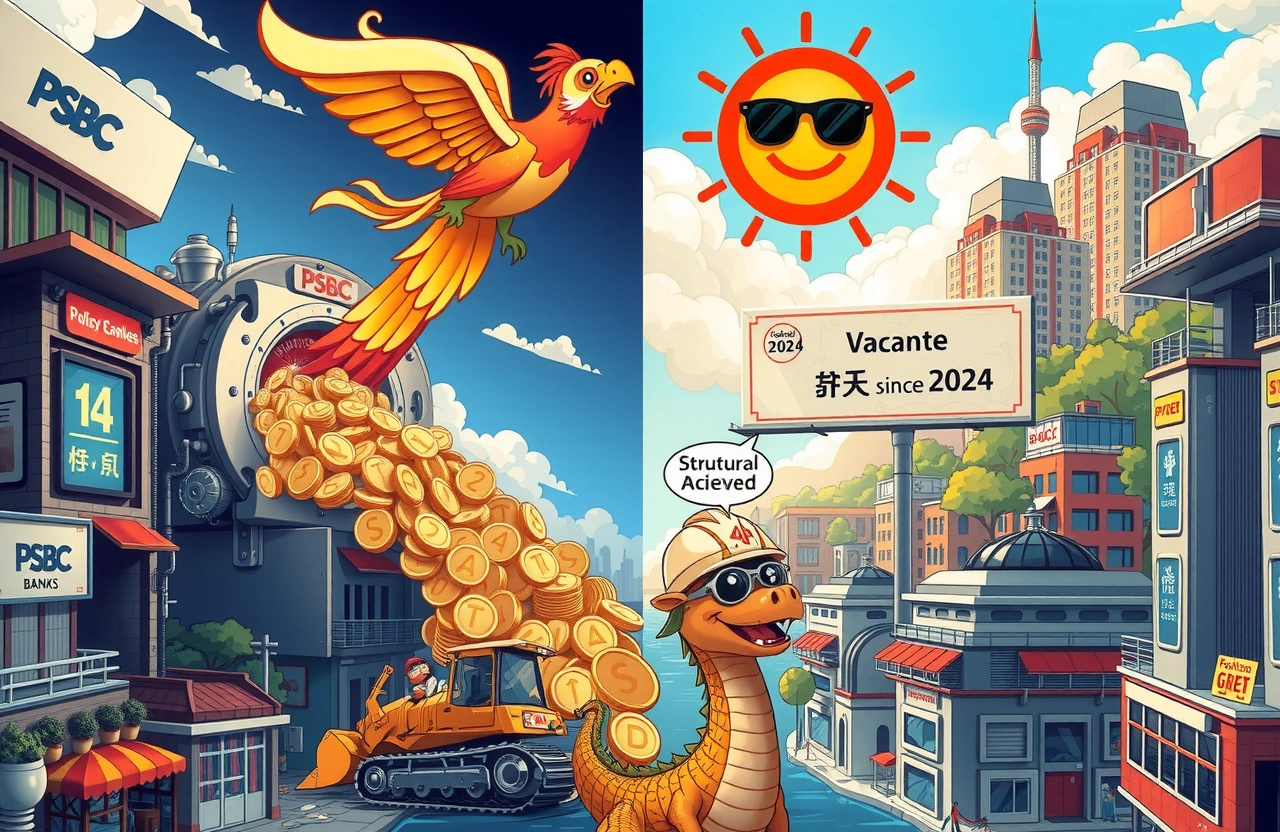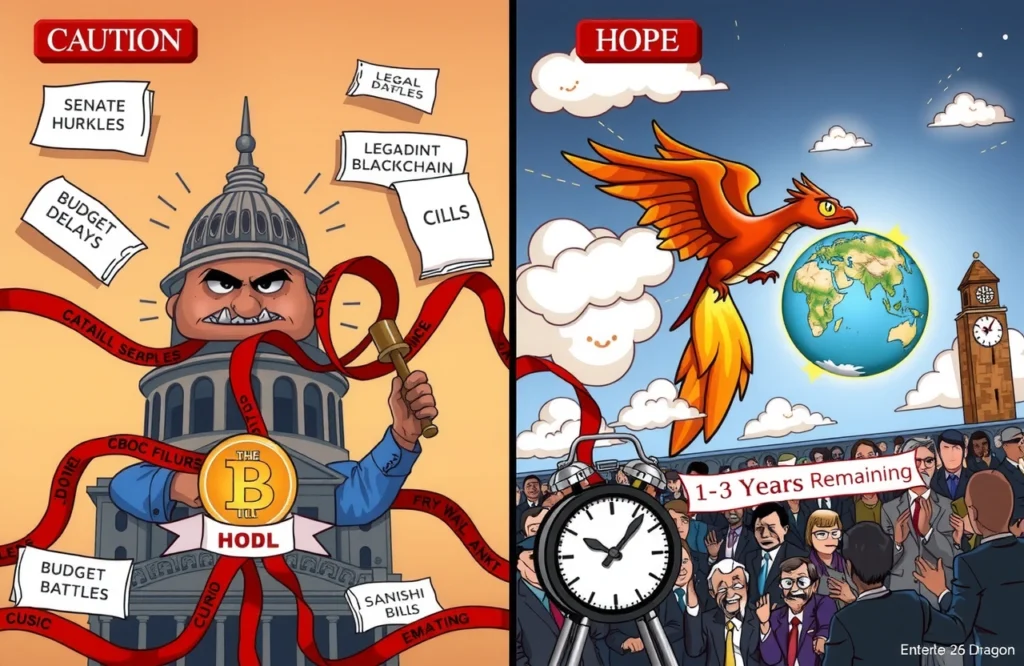China’s Urban Transformation Shift
At a pivotal Central Urban Work Conference recently concluded, policymakers signaled a fundamental transformation in China’s urban development model. After decades of prioritizing greenfield expansion, officials emphasized shifting resources toward ‘urban renewal’ – the process of revitalizing existing infrastructure by renovating historic districts, transforming former industrial zones, and upgrading aging communities. This strategic pivot acknowledges the saturation in new construction markets while unlocking value in existing urban fabric. Crucially, financial institutions received explicit instructions to strengthen credit support for these urban renewal initiatives.
Key Takeaways
- Central policymakers designate urban renewal projects as priority lending targets after recent policy shift
- State-owned banks like PSBC deploy billions for landmark projects ranging from industrial heritage conversions to historic preservation
- Funding accessibility becomes solution for previously stalled developments hampered by capital shortages
- Banking sector pivots to urban renewal projects amid contraction in conventional real estate lending
- Government-backed initiatives offer lower yields but attract banks with enhanced risk profiles and policy alignment
Major State-Owned Banks Accelerate Urban Renewal Finance
The reopening of Shanghai’s Huayangqiao Community stands as testament to bank-powered urban renewal breakthroughs. Plagued by financial hurdles since 2021, this Songjiang District project represented the limbo faced by numerous revitalization initiatives nationwide. Postal Savings Bank of China stepped in with bold action:
Case Study: Shanghai Village Transformation
PSBC’s Songjiang branch engineered tailor-made financing solutions:
- Provided RMB 3.417 billion credit facility
- Unlocked transformation of 270,000 sq m underutilized land
- Catalyzed mixed-use development including residences, schools and commercial spaces
Beyond Shanghai, heritage-centric conversions demonstrate urban renewal’s versatility:
Jingdezhen’s Industrial Reinvention
The Taoxichuan Ceramic Factory transformation exemplifies creative financing approaches:
- PSBC coordinated RMB 757 million syndicated loan package spanning three development phases
- Converted decaying 1950s industrial complex into thriving cultural tourism destination
- Generated over one million annual visitors and thousands of creator economy jobs
“Our integrated financing approach blends structural loans with grassroots entrepreneurship support,” noted a PSBC spokesperson. “In Chaozhou Ancient City, we paired RMB 480 million infrastructure funding with RMB 600 million entrepreneur credit to preserve heritage while stimulating commerce.”
The Banking Landscape Transforms
The new enthusiasm for urban renewal lending contrasts sharply with recent banking sector hesitancy. Multiple factors previously constrained financial participation:
Past Financing Barriers
- Project ambiguity: Blurred distinction between urban renewal and conventional development lending
- Limited incentives: Lower yields compared to consumer credit and corporate loans
- Regulatory environment: ‘Three red lines’ policy restricting developer financing options
The New Blue Ocean Emerges
- Mainstream real estate lending faces regulatory headwinds and reduced demand
- Government backing minimizes default risks for urban renewal borrowers
- Long-term asset quality appeals to balance sheet management
Yang Lei (pseudonym), Shanghai-based banker at regional lender, explained: “While urban renewal loans offer smaller margins, they satisfy policy mandates and provide quality assets – especially vital when high-yield consumer lending contracts.”
Policy Catalyzes Banking Action
The Central Urban Work Conference statement marks the clearest governmental directive yet for financial institution participation. This explicit endorsement addresses longstanding sector concerns:
Resolving Structural Financing Issues
Unlike announcements from China Evergrande or traditional developers seeking capital rescue (Asia credit markets data), urban renewal benefits from institutional support mechanisms:
- Municipal governments serve as primary counterparties reducing counterparty risk
- Asset-backed financing structures based on project cashflows
- Policy banks provide cornerstone funding for large-scale initiatives
“This policy shift finally solves urban renewal’s funding paradox,” analyzed a Beijing-based securities strategist. “Banks sought clear guidelines before deploying substantial balance sheet capacity. The directive provides that clarity.”
Balancing Risks in Urban Renewal Finance
Though characterized by reduced risk profiles, urban renewal loans present distinct considerations requiring bank sophistication:
Risk Mitigation Framework
Leading institutions deploy specialized assessment protocols:
- Phase-based disbursements tied to project milestones
- Enhanced due diligence analyzing municipal counterparty fiscal health
- Long-tenor loan structuring accommodating extended development cycles
The Affordability Housing Factor
Much urban renewal lending concentrates on affordable housing provisions:
- Subsidized rental projects frequently anchor municipal renewal portfolios
- Preferential loan pricing below PBOC benchmarks
- Forward-flow purchase agreements from municipal housing bureaus
Regional Banks Join the Credit Expansion
While PSBC’s prominent initiatives attract attention, city commercial banks increasingly deploy substantial capacity:
- Eastern China institutions targeting district-level renewal partnerships
- Mid-sized banks rolling out specialized urban renewal loan products
- Collaborative lending consortia spreading project exposure
“Our lending committee explicitly prioritized urban renewal loans for H2,” stated a Zhejiang-based regional bank executive. “Simultaneously fulfilling risk management, earnings, and policy alignment objectives proves challenging elsewhere in the property sector.”
Yang Lei emphasized institutional synergies: “When municipal development corporations partner with experienced builders and coordinated banks, previously stranded projects transform communities.”
Future Pathways for Urban Renewal Finance
The convergence of policy direction and banking strategy signals profound sector-wide transformation. Urban renewal now offers:
- Socially-impactful lending bypassing volatile private developers
- Stable revenue streams despite concessionary pricing
- Municipal collaboration deepening bank-local government partnerships
The clearest action path emerges for forward-looking institutions: Develop specialized underwriting frameworks assessing community impact alongside financial metrics. Banking leaders will champion mixed-finance models attracting insurance capital and pension funds toward revitalization lending – moving beyond credit into ethical urbanization partnership.




